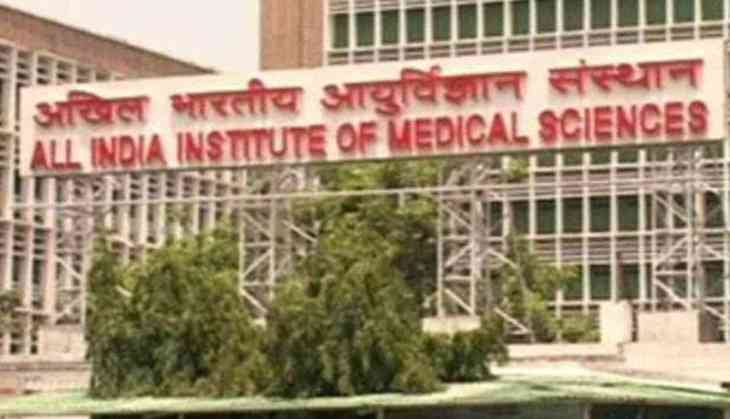With Northern states failing to improve tertiary healthcare, PGIMER & AIIMS feel the pressure

The healthcare sector in the north is ailing. While much has been written about the shortfalls and lacunae in the primary and secondary levels, the scenario at the tertiary and super specialty level is equally grim. Withe states like Punjab, Haryana, Jammu and Kashmir and Himachal Pradesh failing the masses at their level, the people are hardly left with any option. Those who can afford rush to the private hospitals that continue to fleece them right under the nose of the governments while the others have to scamper to either the Post Graduate Institute of Medical Education and Research (PGIMER) at Chandigarh or in some cases the facilities like All India Institute of Medical Sciences (AIIMS) in Delhi.
The AIIMS and medical colleges announced in these states will take a long tie to come to the level of PGIMER or AIIMS Delhi if at all they get the required man power and other resources in an era where healthcare is pretty low on the government's priority list.
The scenario at the PGIMER is just an indicator towards what is wrong in the public health sector at tertiary and super specialty levels in northern India. Things have come to a pass that the Out Patient Departments (OPD) are ticking around 11,500 patients per day which leaves the doctors present with
a window of hardly spending two minutes per person. Even in the emergency there are patients around thrice the number of 110 beds that are available. The resident doctors are putting in 16 to 18 hours of work every day. The waiting list for tests like MRI and PET can be anything between three to four months and the helpless authorities can only give priority to those are very critical.
“We have been writing to the states that we are ready to train the staff employed at their tertiary level hospitals and medical colleges. We are a victim of our reputation. We cannot refuse patients being continually referred to us or coming on their own to the OPDs and the result is that we are under a tremendous pressure,” says the PGIMER director Dr Jagat Ram.
Emphasis is being laid on development of tertiary healthcare centres in the periphery and the PGIMER
authorities claim that the work on a 300 bed satellite centre of the institute at Sangrur in Punjab will be completed by the end of the year while another such centre has been announced in Una in Himachal Pradesh.
According to World Health Organization norms, there should be five beds available per 1000 people and in case of the poorest of the poor countries the figure should be two beds. But the scenario that prevails is that the bed availability stands at one in case of this lone institution catering to the four states and the union territory of Chandigarh with some spill over also coming from western Uttar Pradesh and Uttarakhand.
This bleak scenario raises a series of questions. The primary question is why the state governments have failed to beef up their tertiary health care centres. The second question is that why it took so long for the thought of developing satellite centres so late. Then of course there are other issues.
Sources in Punjab point out that the government's interest in spending on the health sector has dwindled tremendously over the last few decades.
“The state that was once providing up to 12 per cent of its budgetary allocation for health is now not even proving one third of this amount. There has been no new medical college in the public sector that has come up in the last four decades. The existing ones at Patiala, Faridkot and Amritsar have their own set of issues that have prevented them from becoming top centres of tertiary health care despite the fact that the ones at Patiala and Amritsar are more than 50 years old. When there has been no attempt made to develop tertiary health care how can one expect it to happen in a short time,” pointed an observer who has been keeping an eye on the state's health sector for the last several years. There has hardly been any attempt to provide the required man power at the level of specialists.
In case of Haryana, the problem gets compounded in another way. “There are very few urban clusters in the state and this has become a deterrent in tertiary centres coming up. The people living in the National Capital Region (NCR) rush to Delhi while the rest rush to the PGIMER. The number of vacancies right from para medics to the level of specialists has remained around 50 per cent for the last several years,” points out Dr CD Sharma who is also a social activist in Gohana. He had given up his job in the government sector several years ago. He feels that the system is standing on the verge of a collapse as it is being stretched to the limit.
The scenario in Himachal Pradesh is comparatively better as the medical colleges in both Shimla and Tanda still offer several services to the people. But still they have to rely on PGIMER for transplants and several other interventions. “However with more medical colleges coming up even these institutions will soon be grappling with the problem of specialists as those working here are likely to be transferred to the new centres. What is required is a massive investment by the government so that there are enough number of specialists available along with the equipment,” pointed out a doctor working with the state government.
Rakesh Singha, the CPM legislator from Theog, disclosed that government needs to address the shortage of health professionals at all levels. According to him the vacancies at the tertiary level is more than 33 per cent and it goes up to 70 per cent at the lower levels like the community and primary health centres. “This puts maximum pressure at the two top institutions. Not getting proper treatment at the local and district levels, by the time people reach there they are in a critical state,” he said while pointing that the state government that is totally reliable on the centre must arrange to sped more on public health.
With their own shortcomings, the two top government institutions are often compelled to refer many of the patients to the PGIMER.
The scenario in Jammu and Kashmir is also no better. With several of the districts hit by unrest and militancy, one can come across large number of patients landing in Chandigarh on a daily basis in search of healthcare.


